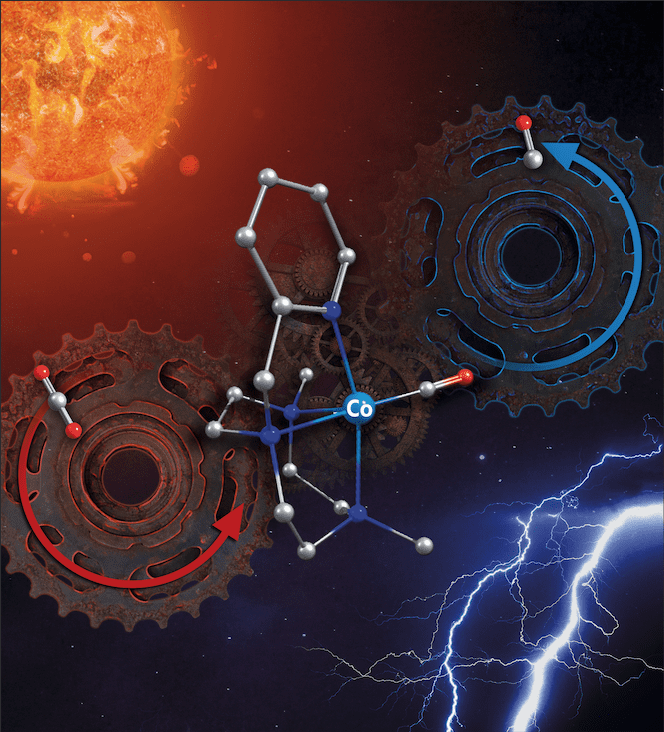Enlightening how to escape bottlenecks in solar fuel production
11th December 2019 – “Learn the rules like a pro so you can break them like an artist” has inspired researchers in ICIQ’s Lloret group to dive into the reaction mechanism of CO2 to CO reduction.
Humankind has mastered the burning of fossil fuels, leading to a global climatic emergency. Now, to solve the energy crisis scientists need to refine the art of producing renewable energies by transforming CO2 into carbon-based fuels. But using CO2 as raw material is no trivial ambition. To this end, ICIQ researchers have untangled the elemental steps in the CO2 reduction reaction, a crucial milestone to design better CO2 reduction catalysts.
The research team at ICIQ has determined the mechanism and bottlenecks of the CO2 reduction reaction with a model cobalt catalyst. With the combination of in situ measurements and theoretical approaches, they pinpointed an elusive cobalt(I) carbonyl intermediate, which is formed very early in the reaction and responsible for one of the most problematic bottlenecks in the CO2 reduction process. “Mechanistic studies allowed us to identify the bottleneck and create a photocatalytic strategy to break the carbonylic compounds in a controlled manner, thus making the reaction more efficient,” explains Sergio Fernández, first author of the paper.
“We know that the reaction conditions play a very important role in the CO2 to CO reduction reaction. When light meets electrocatalysis, the reaction goes through a different pathway – this is the first time it’s reported,” says Fernández. The group hopes that this unveiling strategy will inspire other scientists to combine different techniques to untangle reaction mechanisms and to progress in the CO2 reduction for the production of synthetic fuels. The results of this study have been published in JACS.
Related news

Let's create a brighter future
Join our team to work with renowned researchers, tackle groundbreaking
projects and contribute to meaningful scientific advancements







 19-09-2024
19-09-2024 















